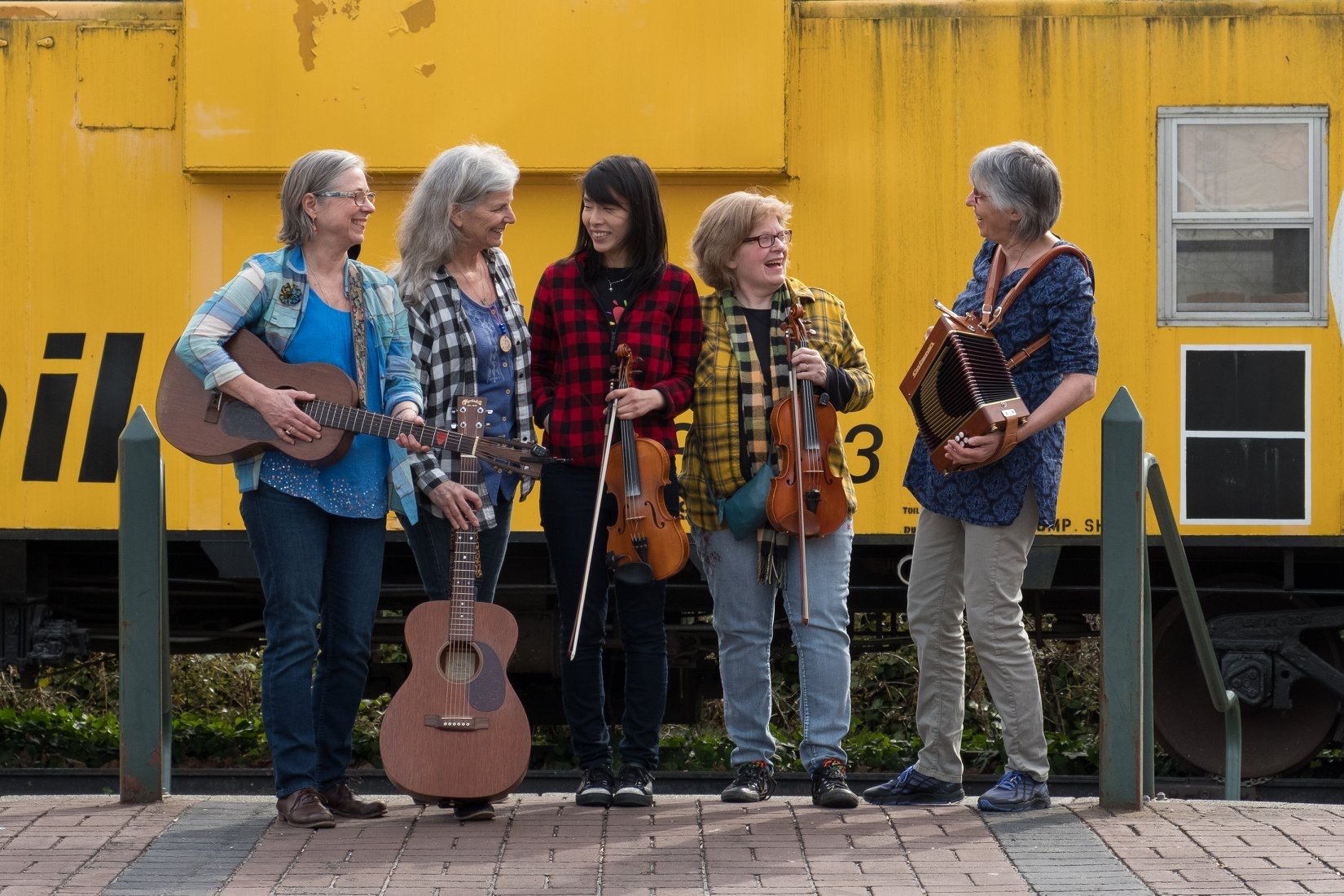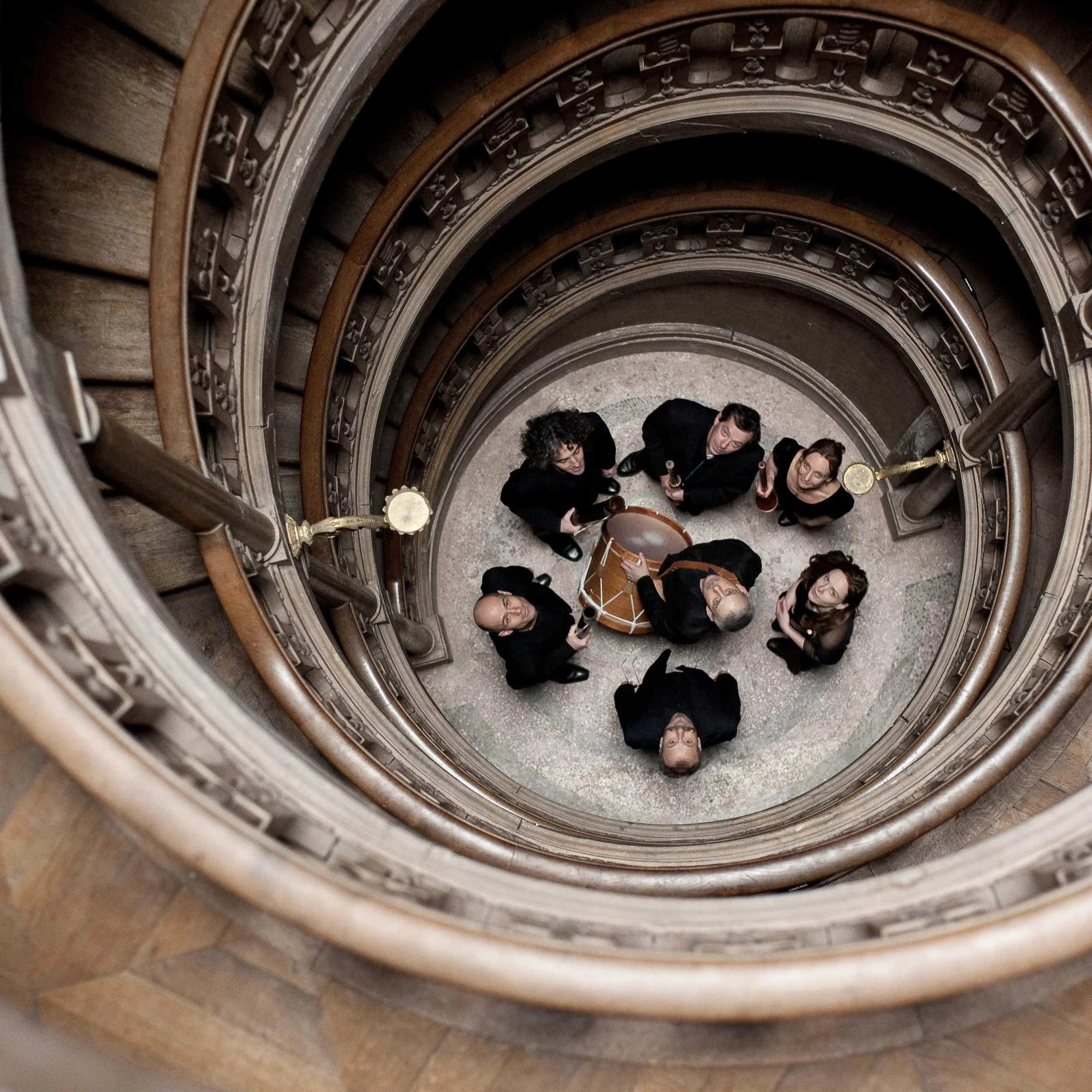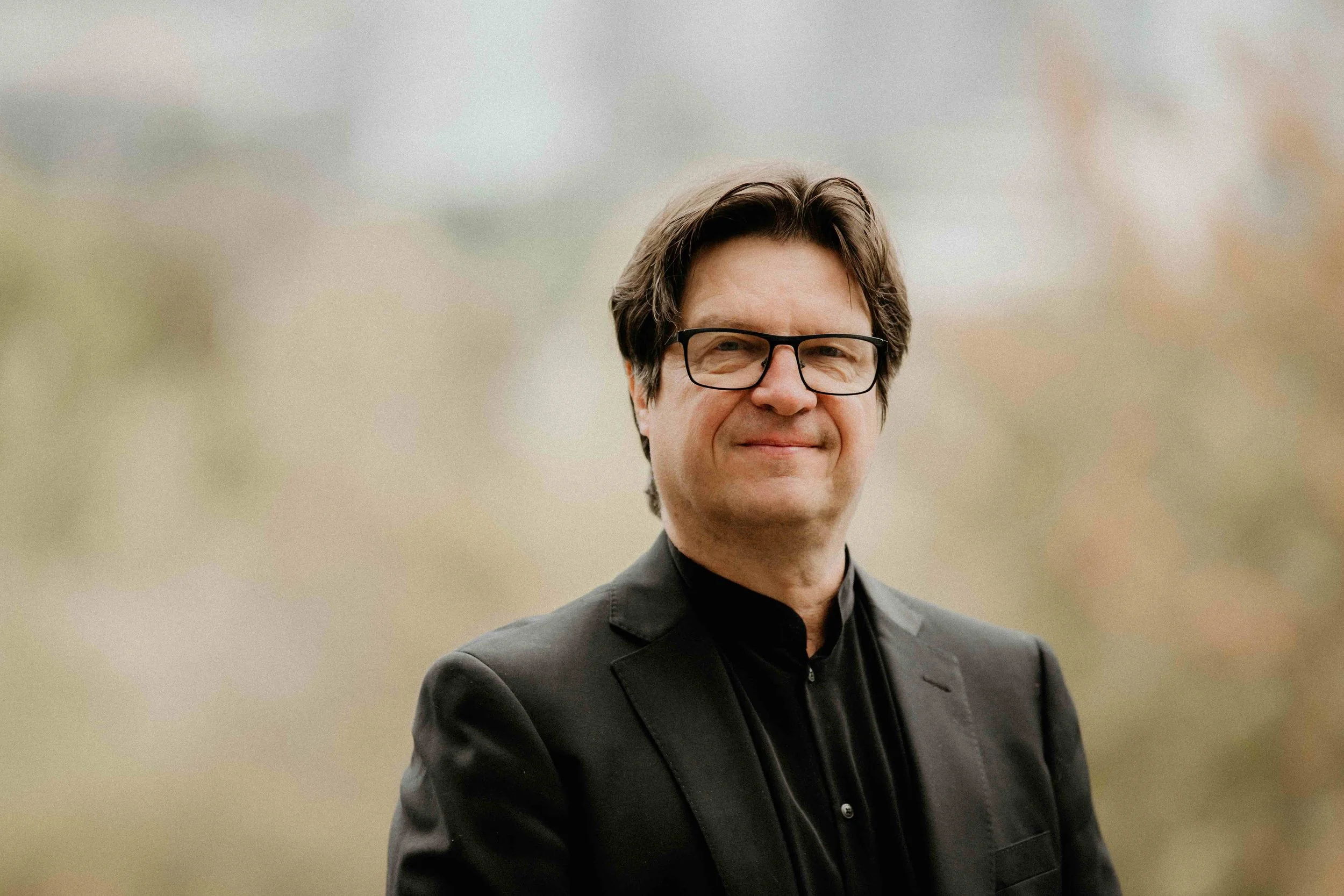With Festival du Bois' Podorythmie, folk songs meet stepdancing, limberjacks, and—yes—crankies
If you’re not quite sure what all those are, read on in our interview with the cross-border quintet of fiddlers, guitarists, and accordion players
Podorythmie is made up of three Americans from Seattle, a French immigrant, and a Vancouver-based Chinese Canadian.
Festival du Bois takes place at Coquitlam’s Mackin Park from Thursday to Saturday, March 8 to 10
TRICK QUESTION: WHEN is listening to folk music like going to the movies?
The easy answer, of course, is “Never.” But should you ever find yourself in the same room as the cross-border quintet known as Podorythmie, you might be in for a very pleasant surprise—and more than one, in fact.
The first surprise is that three Americans from Seattle, a French immigrant, and a Vancouver-based Chinese Canadian can play the traditional music of La Belle Province and Acadia at such a high level. The next is that there’s as much dancing as music in the band’s shows, although the name should be a tip-off. Podorythmie is the art of tapping out a beat with one’s feet while playing an instrument with one’s hands; it’s a major part of French-Canadian folk music, although it’s also been adopted by performers worldwide. For Podorythmie the band, however, the concept also extends to stepdancing: founding member Cil Pierce has mastered several different folk-dance styles, and while guitarist Julia Derby is primarily concerned with keeping the chords flowing for fiddlers Sue Truman and Prairie Wolf and accordionist Pascale Lelong to play over, every set she also gets to show off her abilities with limberjacks, wooden marionettes whose high-stepping antics put even human dancers to shame.
And the third surprise, the one that has to do with going to the movies? We’re just going to keep you in suspense for a minute.
Truman, Podorythmie’s spokesperson and co-founder, has been fascinated by French-Canadian music and folk dance for 42 years. “I started with old-time music, American old-time music,” she explains in a telephone conversation from her Seattle home. “I was clogging, and then in 1982 I was exposed to French-Canadian stepdancing at the Fiddle Tunes festival up in Port Townsend. I just glommed onto the stepdancing, the percussive dance; I just fell in love with that. And of course what goes along with that is the music, and that drew me in—the syncopation of the music. It’s such a happy, heartfelt kind of music. It just grabs your heart and makes you happy.”
Truman’s neighbours will testify to that. Podorythmie began as a kind of private club—or, as Truman likes to call it, “a support group for wayward stepdancers”.
“At first, it was actually four stepdancers, one accordion player, and a fiddler from Nova Scotia,” she explains. “So there were six of us, and it was mainly just getting together to play in my little backyard cabin. And, you know, the cabin’s wooden floor is up on cinderblocks, so it’s like dancing in a big drum. I mean, it’s like really loud! You’ve got these wooden taps on your shoes and you dance tapping in your chair or stepdancing—and thank goodness our neighbours were tolerant of all this, ’cause we’d be making a big racket on a work night and they would open up their doors and windows to listen instead of calling the cops!
“But the dancing did bring us together, and it did start this band,” she adds.
Which brings us to the third and biggest surprise you’ll find at a Podorythmie show: they’re not just a band, they’re multimedia innovators in a refreshing, folk-art kind of way.
“In 2011,” Truman says, “I discovered crankies.” And crankies, it turns out, are a 19th-century precursor to the movies, except that instead of being shot on film stock or captured by a digital camera, these moving pictures are drawn, printed, or appliquéd on hand-cranked spools of fabric—up to a thousand feet long, in the case of some historical examples.
“I saw a video of one on YouTube, and my mind just exploded,” the fiddler notes. “I’d been a quilter forever, since I was three years old, and I was also into all kinds of folk art, but this was a way to combine the music and the folk art and tell stories. I just loved the fact that this long scroll was hand-cranked. And at that time I was 57 and feeling like I wanted something else in my life. I was just feeling slightly bored, and I knew nothing about storytelling, really, and I’m not a trained visual artist, but I just decided ‘I’m going to do it.’ At that age, it’s like you don’t care any more if you fail, or what anybody else thinks about you. I was like ‘If I fail, I fail. I don’t care.’ And so I just jumped into making crankies, not knowing how to do it, or not knowing really anything.
“Podorythmie was happy to add that to our repertoire, which was the tunes and the stepdancing and the podorythmie and the limberjacks and the songs,” adds Truman, who has since become something of an authority on the history and manufacture of these moving panoramas. “And it’s interesting: I was just reflecting the other day that our first crankie performance was in 2011, and we’ve been continuously performing crankies since then, and also teaching as a band. When we perform at different festivals they’ll hire us to do little workshops with kids, or with kids and adults—actually it’s never just kids: you’ve got librarians and teachers and folk artists and historians coming from all over the place to take these workshops, and when they’re in there with the kids and the images and the dancing, they’re like little kids themselves! So that’s the other thing that makes this band unique: we’ve been performing this art form, the crankies, for so long, and there’s really been a revival.”
When Podorythmie returns to the Festival du Bois next weekend (March 8 to 10), the group will perform live soundtracks for three separate crankies, including 1909, a work that the festival commissioned to tell the story of its Maillardville site. There’s also Littlefoot, which Truman describes as “a story that I wrote about a juvenile Bigfoot who was really different from the other juvenile Bigfoots. He didn’t like to go fishing or forage for berries; he just liked to stepdance on tree stumps!”
And then there’s a new commission from Festival du Bois artistic director Joanne Dumas. “She asked me to create a crankie about the woods, and trees, because, of course, it’s a ‘festival of wood’,” Truman notes. “So this one is about trees, and about how important they are to us: to our mental health, to our physical health, providing maple syrup… You know, just how fascinating and old they are. How amazing they are. The sequoias of California, some of them are a couple of thousand years old. So it’s a very broad brushstroke, just showing different aspects of trees.”
There’s a delicious irony that this low-tech arboreal fantasy will make its debut in a former sawmill town. But then again, as the rebirth of the crankie in this digital age makes clear, plus ça change, plus c'est la même chose.
![]()














